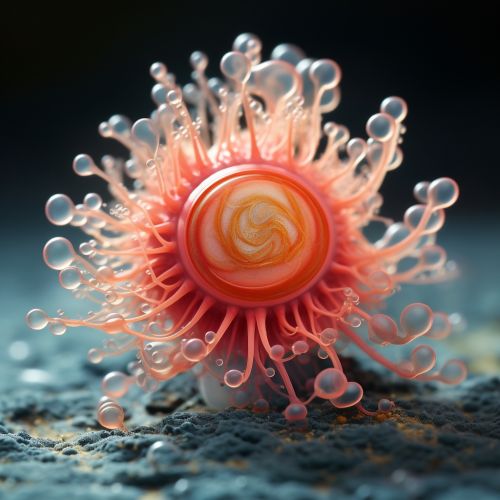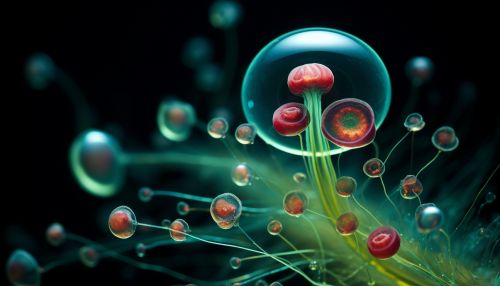Flagellum
Overview
A flagellum (plural: flagella) is a whip-like appendage that protrudes from the cell body of certain prokaryotic and eukaryotic cells. The primary role of the flagellum is locomotion, but it also often functions as a sensory organelle, being sensitive to chemicals and temperatures outside the cell. The flagellum is a complex cellular structure composed of proteins and is one of the most sophisticated self-assembling molecular machines known.


Structure and Composition
The structure and composition of the flagellum varies between prokaryotic and eukaryotic cells.
Prokaryotic Flagella
In prokaryotes, such as bacteria, the flagellum is a helical filamentous structure composed of a protein called flagellin. The flagellum is anchored to the cell wall and membrane by a basal body, and is driven by a rotary engine made up of protein, located at the flagellum's anchor point. The engine is powered by proton motive force, i.e., by the flow of protons (H+ ions) across the bacterial cell membrane due to a concentration gradient set up by the cell's metabolism.
Eukaryotic Flagella
In eukaryotes, the "flagella" are structurally quite different, being composed of a "9+2" arrangement of microtubule doublets surrounding a central pair of microtubules. This structure is enclosed within the cell's plasma membrane, and is known as an axoneme. The eukaryotic flagellum is driven by the motor protein dynein, which drives the sliding of microtubule doublets against each other within the axoneme, causing the flagellum to bend.
Function
The primary function of the flagellum is locomotion. In prokaryotes, the rotation of the flagellum propels the cell forward, with the direction of rotation determining whether the cell moves forward or backward. In eukaryotes, the bending motion of the flagellum propels the cell forward.
In addition to locomotion, flagella often function as sensory organelles, being sensitive to chemicals and temperatures outside the cell. This is known as chemotaxis and thermotaxis, respectively. The flagellum can also be involved in other cell processes, such as adhesion to surfaces, formation of biofilms, and virulence for pathogens.
Evolution
The evolution of the flagellum is a topic of ongoing research and debate among scientists. The complexity of its structure and function has made it a focal point in discussions of evolutionary biology, particularly in debates involving proponents of intelligent design and those supporting Darwinian evolution. The current consensus among scientists is that the flagellum evolved from a secretory system, with additional proteins being added through gene duplication and divergence.
